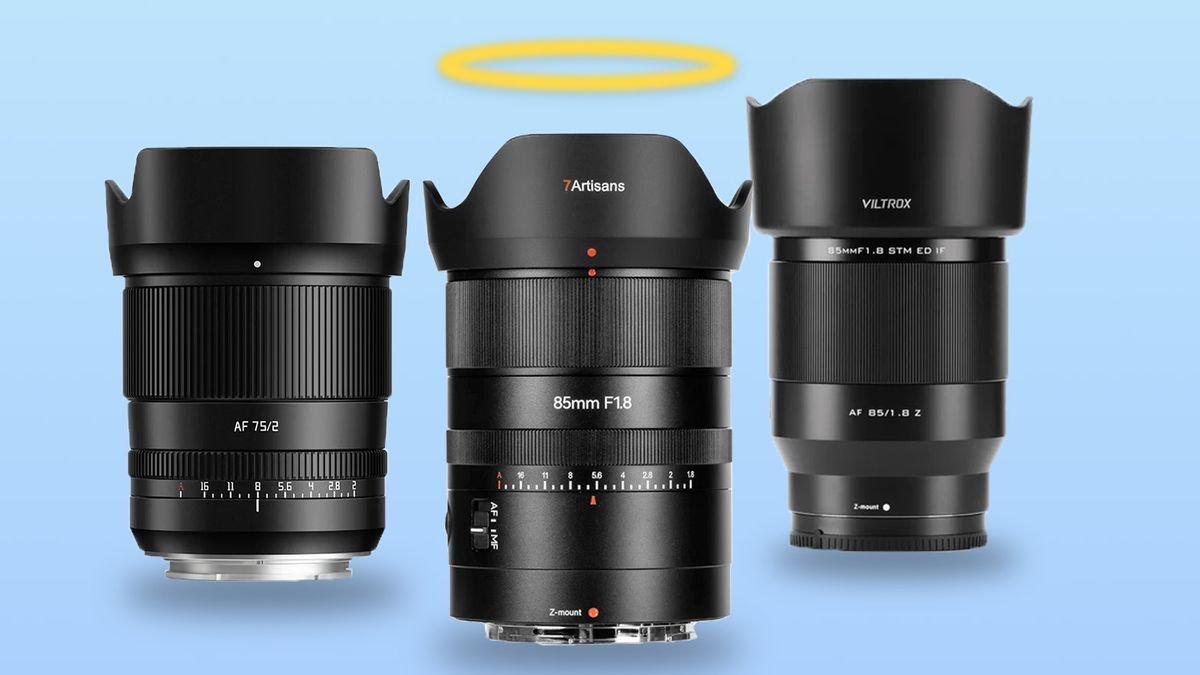Cheap, third-party lenses are good for consumers and good for camera manufacturers
Camera manufacturers who embrace cheap, third-party lenses will reap the benefits in the long run

It seems a day barely goes by without affordable lens manufacturers such as TTArtisan, Viltrox or 7Artisans releasing a cut-price lens for mirrorless systems. Just this week, I wrote stories about the new 7Artisans AF 85mm f/1.8 for Nikon Z mount and the TTArtisan AF 75mm f/2 for Nikon Z and Sony E.
These aren't just cheap manual focus primes for smaller sensors. They are relatively fast, full-frame-compatible autofocus lenses, designed to compete directly with the optical behemoths of the world. And there's no sign of the affordable arms race slowing down, either. It's been reported that Chinese lens manufacturers are developing autofocus zoom lenses, which would really put the proverbial cat among the pigeons.
We all know that some manufacturers have taken steps to limit third-party lens production. And on the face of it, it isn't hard to see why. More people buying cheap third-party lenses must mean fewer people buying premium glass, right? But how much market share are affordable manufacturers siphoning, really?
I don't have the figures, but I'm pretty sure that a photographer who's always bought Nikon, Sigma or Canon glass will continue to do so. And if you're saving up for that dream Nikon Z 85mm f/1.2 S, say, the 7Artisans 85mm f/1.8 isn't going to compete with that Holy Grail purchase. But, it might provide an affordable stopgap in the meantime.
And this is the beauty of affordable lenses. They enable photographers on a budget to fill up their kitbags quicker and enjoy their photography. I fail to see how this differs from the Nikon FTZ II Adapter and Canon Mount Adapter EF-EOS R enabling users to mount cheaper DSLR glass.

An entry-level gateway
I think a large proportion of the mirrorless market – especially full-frame equipment – has become rather elitist. I've been writing about photography for so long, that I find myself calling the new Tamron 90mm f/2.8 Di III VXD Macro affordable. Compared to other macro lenses out there it's a very competitive price, but it's still $699 in the US!
As a self-confessed Nikon fanboy, I think the Big N has done a decent job of offering affordable, full-frame mirrorless lenses, what with its budget Holy Trinity of f/2.8 lenses maxing out at roughly $1,300. Expensive, but considerably cheaper than S-Line counterparts. Then you have the likes of the Z 40mm f/2 and Z 28mm f/2.8 at $309.95, and more recently the Z 50mm f/1.4 at $499.95 – a good price for such a fast aperture.
Get the Digital Camera World Newsletter
The best camera deals, reviews, product advice, and unmissable photography news, direct to your inbox!
Tamron is also producing Z-mount lenses and, having recently picked up the Tamron 28-75mm F/2.8 Di III VXD G2, I've been very impressed with its middle ground between price and quality. And yet, you simply cannot sniff at a 7Artisans 85mm f/1.8 for $299. (Caveat: We’ve not yet reviewed it.)
I've spoken to an awful lot of hobbyist photographers during the mirrorless revolution who had all but discounted the move from their DSLR, based purely on the expense. But in 2024, cheap lenses have become a gateway to mirrorless systems. Now that mirrorless has come of age, you can pick up a decent camera for a decent price on the second-hand market, buy an affordable 50mm f/1.8 and you're ready to rock and roll.
For some, that cheap camera and lens combination will be the genesis of a lifelong mirrorless camera obsession – and a long-term customer for the system in question. So, far from yanking customers and coffers away from the big camera companies, I'm certain that cheap lenses are encouraging latecomers to buy into mirrorless systems.
If I'm right, blocking third-party manufacturing could prove very costly in the long run. There are still plenty of potential consumers who haven't yet made the move to mirrorless out there.
Affordable gear might be the only way to get them through the door.
You might be interested in the best Nikon lenses, including the best Nikon Z lenses for its mirrorless system.

Mike is Digital Camera World's How To Editor. He has over a decade of experience, writing for some of the biggest specialist publications including Digital Camera, Digital Photographer and PhotoPlus: The Canon Magazine. Prior to DCW, Mike was Deputy Editor of N-Photo: The Nikon Magazine and Production Editor at Wex Photo Video, where he sharpened his skills in both the stills and videography spheres. While he's an avid motorsport photographer, his skills extend to every genre of photography – making him one of Digital Camera World's top tutors for techniques on cameras, lenses, tripods, filters and other imaging equipment – as well as sharing his expertise on shooting everything from portraits and landscapes to abstracts and architecture to wildlife and, yes, fast things going around race tracks...